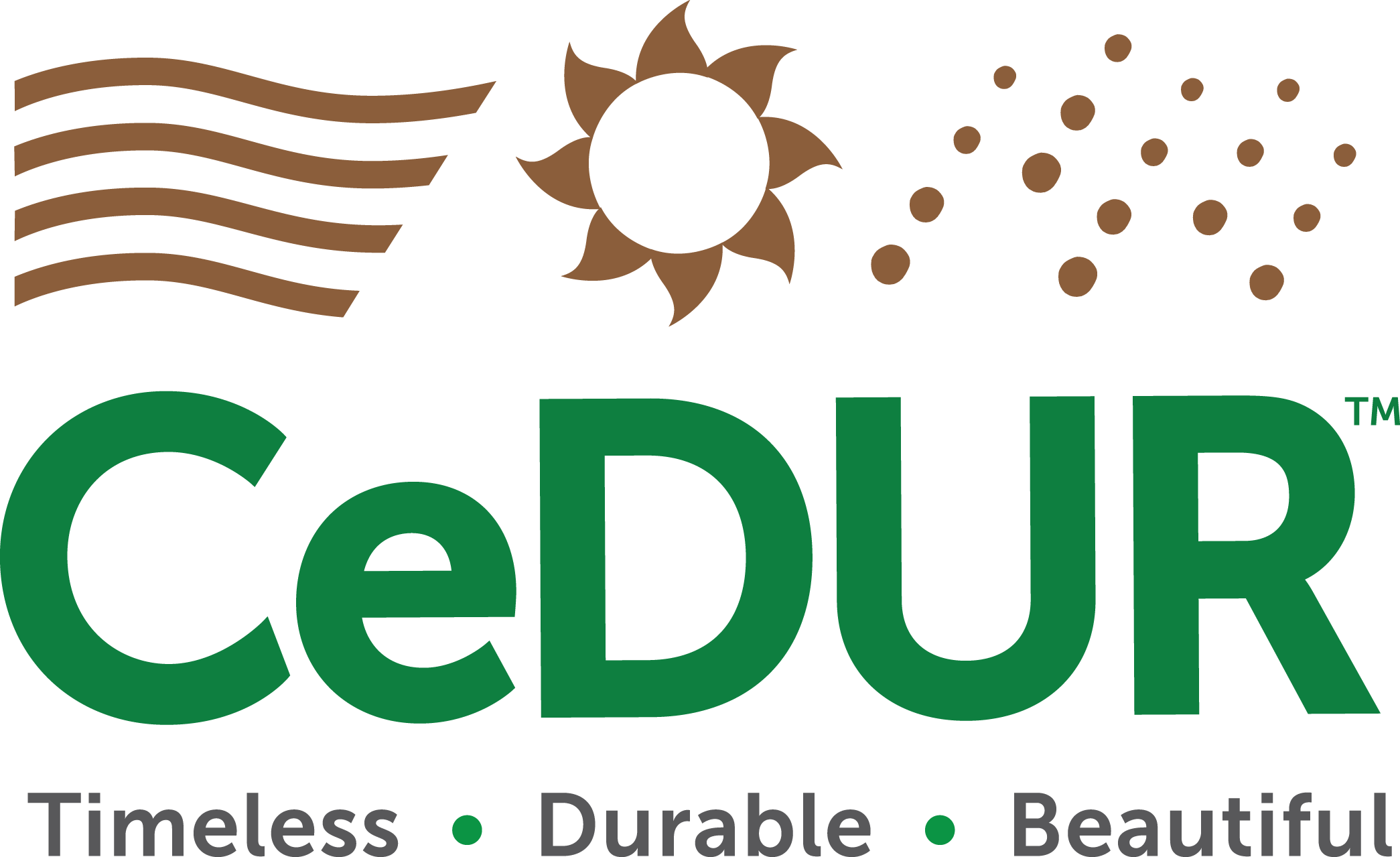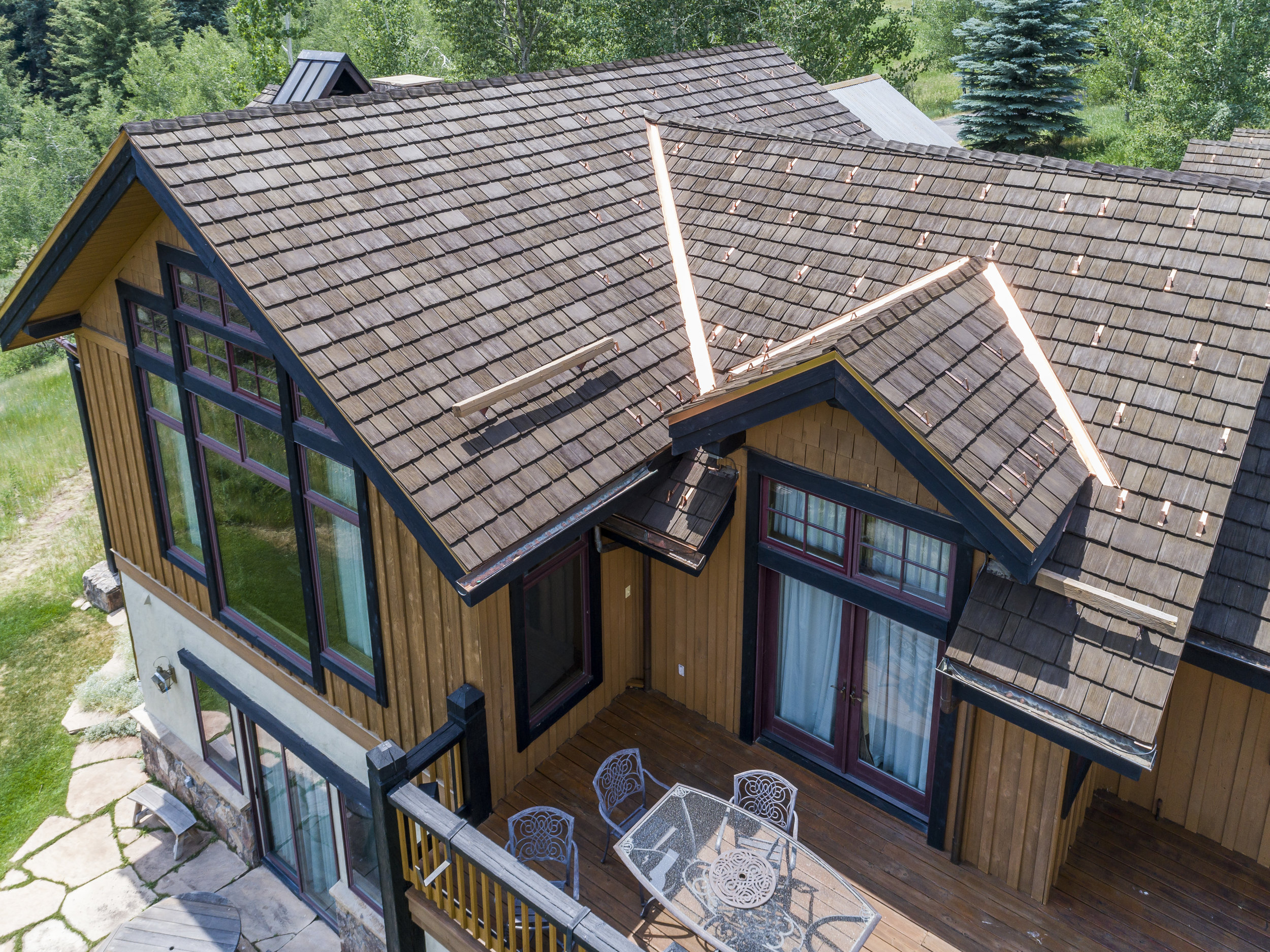A Guide To Understanding Cool Roof Shingles and the Cool Roof Rating Council
Picture of Cool Roof Rated CeDUR in the Golden Cedar color, provides enhanced energy efficiency and style.
In warm climates and sun-soaked states, homeowners are increasingly turning to cool roofs as an energy-efficient and environmentally smart solution. But what is a cool roof—and what makes it different from a standard roofing system?
This guide breaks down everything you need to know, from how cool roof shingles work to what they cost and why they’re a smart choice for residential applications.
What Is a Cool Roof?
A cool roof is a roofing system designed to reflect more sunlight and absorb less heat than traditional roofs. It uses specially formulated materials or coatings with high solar reflectance (SR) and high thermal emittance (TE), keeping the roof surface cooler on hot days.
Instead of reaching temperatures of 150°F or more in the summer sun, cool roofs may stay 50–60°F cooler, helping to reduce indoor cooling needs and overall energy consumption.
Why was Cool Roof Adopted?
Cool Roof was adopted to help reduce the amount of heat absorbed by buildings and homes, thereby improving energy efficiency and reducing cooling costs.
Cool Roof was adopted initially by the state of California. California has been a pioneer in adopting cool roof requirements and the state of California utilizes Title 24, Part 6, building energy efficiency standards that mandate cool roofs for new construction and replacements in certain climate zones.
Keep in mind that the Cool Roof Rating Council (CRRC) also provides a third-party rating program for cool roofs, and many building codes and utility rebates specify the weathered rating of roofing products.
What Is a Cool Roof for Residential Homes?
Cool roof technology isn’t just for commercial buildings—it’s highly beneficial for residential homes as well. Homeowners in sunny regions, like the Southwest, often struggle with heat buildup, increased AC use, and higher electric bills. A cool roof can address all of these issues while extending the life of the roof itself.
Key benefits for residential properties include:
Lower indoor temperatures and reduced reliance on air conditioning
Decreased roof expansion and contraction from thermal cycling
Potential rebates or incentives in certain municipalities
Benefits of Cool Roofs
A Stronger Roof: A potential more durable roof, with a longer lifespan and fewer maintenance costs.
Temperature Reduction: Significantly reduced temperatures during the summer, including the internal temperature of the home or building, especially compared to traditional cooling techniques.
Lower Utility Use and Cost: Due to a residential cool roof significantly reducing temperatures internally and externally, homeowners will have to rely less on their air conditioning system. As a result, homeowners can spend less on their energy bills.
Reduced Heat Island Effect: The heat island effect is a common issue in urban environments, and by installing cool roof solutions in those areas, the building’s overall temperature will not only be lowered, the surrounding area will be as well.
Reduced Air Pollution: When people use their AC systems, it reduces the burning of fossil fuels, and therefore reduces the admission of harmful greenhouse gasses. As a result, it can also lead to higher air quality, due to the reduction of these harmful emissions that lead to issues like smog in certain places.
Utility Rebates: Another benefit to cool roof installation is the fact that there are several utility rebates that may allow you to earn back your initial cool roof shingles cost, and then continue to save you money over time.
How Much Does a Cool Roof Cost?
Cool roof costs depend on your roofing material, home size, and location. Here’s a general breakdown:
Keep in mind that while cool roof shingles may cost slightly more upfront, the energy savings over time often offset the difference. Homeowners may also qualify for local incentives or credits.
This graphic provides average costs, these costs will vary by location and installer.
What Are Cool Roof Shingles?
Cool roof shingles are a special class of roofing products designed to reflect sunlight and emit absorbed heat. They can be made from asphalt, metal, or synthetic materials, but what sets them apart is their surface reflectivity and color.
Characteristics of cool roof shingles:
Light or reflective color tones
Coated with reflective granules or polymers
Tested and rated by programs such as ENERGY STAR or the Cool Roof Rating Council (CRRC)
Cool Roof Installation: What Homeowners Should Know
If you’re considering a residential cool roof, installation is an important factor. You’ll want to work with a licensed roofing contractor who:
Understands your local climate and building codes
Has experience with cool roof products and application methods
Can recommend proper underlayment for insulation and moisture control
Also consider your roof pitch. Some products work better on steep-slope roofs than others. A product like CeDUR’s lightweight synthetic shingles, for example, can be easily installed on pitched or sloped roof designs without additional engineering.
CeDUR Golden Cedar Cool Roof Rated Roof
CeDUR Golden Cedar synthetic roofing products are Cool Roof Rated and Title 24 compliant. Golden Cedar provides a warm wood shake look with the added benefit of being Cool Roof Rated and Title 24 Compliant for Southern California communities.
Why CeDUR Is a Smart Cool Roof Solution
CeDUR’s synthetic roofing shakes are more than beautiful—they’re engineered for energy performance. With options that meet Cool Roof Rating Council standards, CeDUR is an ideal solution for homeowners looking for aesthetics, durability, and efficiency in one premium product.
CeDUR cool roof features:
High solar reflectance and thermal emittance
Class A Fire Rating
Class 4 Impact Rating (hail and storm protection)
UV and warp resistant
Lightweight, easy to install, and low maintenance
CeDUR is particularly well suited for residential cool roof applications in hot, sunny environments where performance and curb appeal both matter.
A CeDUR Walden roof for enhanced energy efficiency and style.
Frequently Asked Questions About Cool Roofs
What is a cool roof and how does it work? A cool roof reflects more sunlight and absorbs less heat than traditional roofs, helping lower indoor temperatures and reduce energy bills.
Are cool roofs worth the cost? Yes. While initial costs may be slightly higher, cool roofs can reduce cooling costs by 10–15% or more and help extend roof life.
Can I install a cool roof on an existing home? Yes. Cool roof products are available for new builds or re-roofing projects, including shingles, tiles, and coatings.
What is the best cool roof for a residential home? Lightweight synthetic shingles like CeDUR offer a combination of performance, fire safety, and architectural appeal ideal for residential cool roofs.
Explore CeDUR’s Cool Roof Solutions
CeDUR synthetic roof on a residential home in Aspen, Colorado, offering beauty and lasting performance.
Building a new home or upgrading an existing one? CeDUR provides residential cool roof solutions that deliver lasting beauty and performance. Learn more about our synthetic shingle products or contact our team for a contractor recommendation near you.





